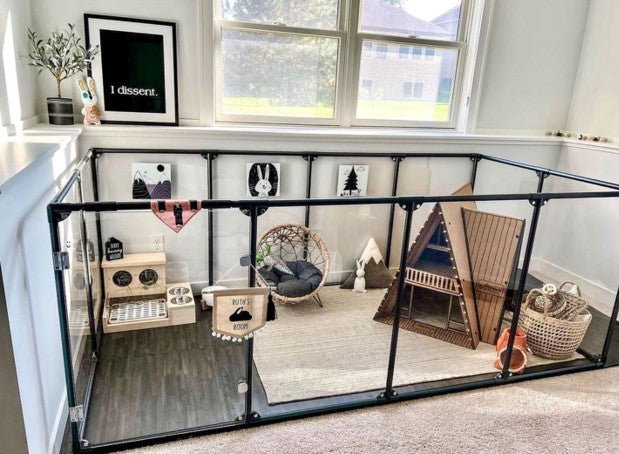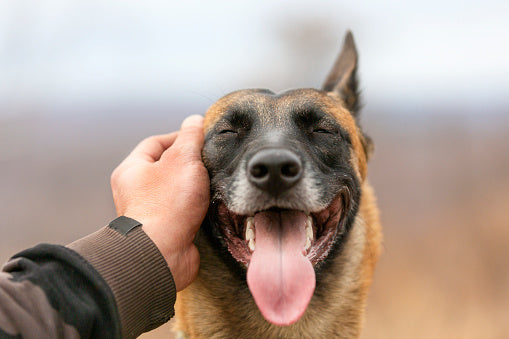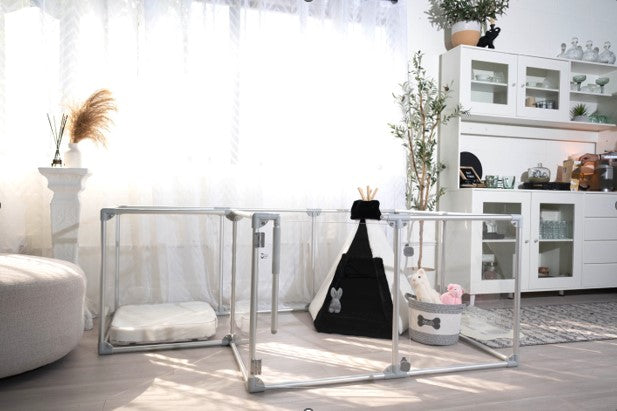Rabbits are delightful companions known for their playful, gentle nature. As more pet lovers choose to keep rabbits indoors, understanding how to create a comfortable, enriching environment is essential. This comprehensive guide will walk you through setting up the perfect indoor rabbit pen, ensuring your furry friend enjoys a happy, healthy life by your side.
A Large Enclosure is Key to Your Bunny’s Health and Happiness
The heart of your rabbit's indoor habitat is a spacious enclosure that allows for ample movement, play, and rest. Contrary to common belief, small cages are not suitable for rabbits, as they need space to roam, hop, and stretch throughout the day. Clearly Loved Pets offers innovative enclosures that provide the openness and space necessary for your rabbit's well-being, combining safety with aesthetic appeal to blend seamlessly into your home decor. Here are some important reasons your furbaby needs a large space:
- Adequate Exercise: A large enclosure provides essential space for physical activities such as hopping, stretching, and running, which are crucial for maintaining a rabbit's physical health and preventing obesity.
- Mental Stimulation: Spacious environments allow for the inclusion of various toys, tunnels, and platforms, offering mental stimulation that mimics their natural habitat and keeps boredom at bay.
- Behavioral Health: Ample space enables rabbits to exhibit natural behaviors like digging, foraging, and exploring, promoting psychological well-being and reducing stress-related issues.
- Social Interaction: For households with more than one rabbit, a large enclosure ensures enough room for all bunnies to live comfortably together, facilitating social bonding while minimizing aggression and territorial disputes.
Zone Establishment: A larger area allows rabbits to establish different zones for sleeping, eating, toileting, and playing, contributing to a cleaner, more organized living environment that supports their natural instincts and habits.
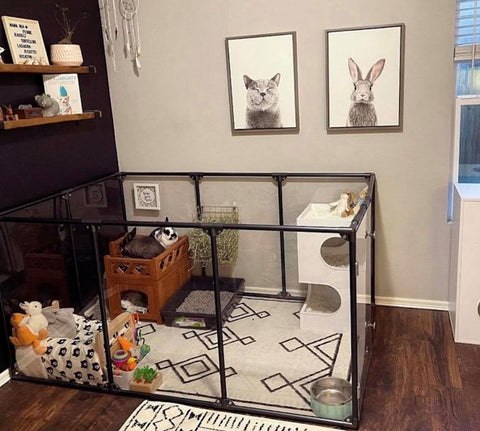
Supplies To Furnish Your Bun’s Space
Creating a thriving environment for your rabbit extends beyond the enclosure. Here are essential supplies to consider:
- Food and Water
A balanced diet is crucial for your rabbit's health. Fresh hay should be readily available, as it's vital for their digestive system and dental health. Include a variety of leafy greens and a small portion of high-quality pellets to provide necessary nutrients. Fresh, clean water must be accessible at all times, preferably through a bottle or bowl that's easily refillable and cleanable to maintain hygiene.
- Toys
Rabbits are intelligent, curious creatures that require mental stimulation to stay happy. Offer a variety of toys, such as wooden chew toys, balls, and tunnels, to keep your rabbit entertained and engaged. Toys not only prevent boredom but also help manage your rabbit's natural instinct to chew, keeping them away from furniture and wires.
- Hideaways
A hideaway provides a sense of security and a private retreat for your rabbit. This can be as simple as a cardboard box with entrance and exit holes or a more structured hideout available at pet stores. The key is to ensure the hideaway is safe, non-toxic, and large enough for your rabbit to comfortably move in and out.
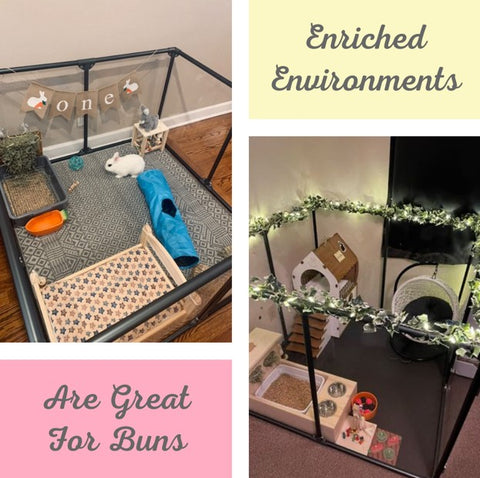
Consider a Second Bunny
Rabbits are social animals that thrive in the company of their kind. Consider adopting a second bunny to keep your pet company, especially if you're away from home for long periods. Introduce them slowly and in a neutral space to ensure they get along. Remember, all rabbits should be neutered or spayed to prevent unwanted litters and reduce territorial behavior. Bounded buns are happier together because they benefit from:
- Companionship: Rabbits are social animals that thrive on interaction. Having two bunnies ensures they always have a companion for comfort, play, and socialization, reducing loneliness and boredom.
- Behavioral Improvement: Companionship can lead to better behavioral health, reducing instances of aggression, depression, and anxiety that can arise from isolation.
- Enhanced Activity Levels: Two rabbits are likely to be more active and engaged, encouraging each other to play and explore. This increased activity promotes physical health and well-being.
- Learning from Each Other: Rabbits can learn positive behaviors from each other, such as using the litter box or feeding routines. A companion can help a less confident rabbit become more comfortable with humans and their environment.
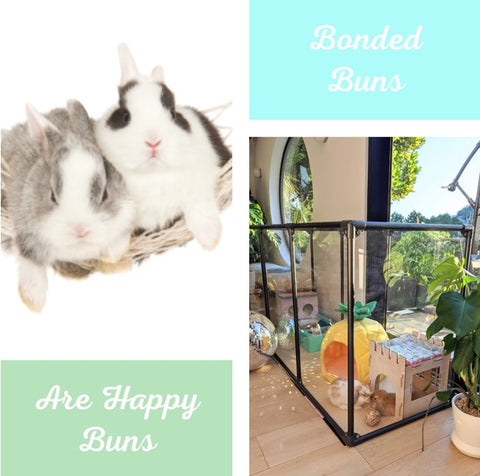
Set Up a Tidy Feeder Area with a Universal Kit from Clearly Loved Pets
Dedicate an area of the pen for feeding, equipped with a Universal Kit from Clearly Loved Pets. This kit expands upon an existing small, medium, or large pen (we recommend the large pen for bunnies) and creates a 2 ft x 2 ft square where a feeder/litter box can be placed. The feeder area should be kept clean, with food and water refreshed daily to encourage healthy eating habits.
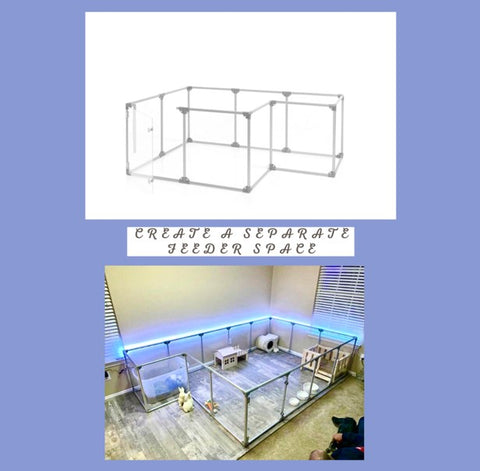
Incorporating these elements into your indoor rabbit pen will create a stimulating, comfortable environment for your rabbit to explore, play, and relax. By understanding and catering to your rabbit's needs, you'll unlock the joy of indoor rabbit living, fostering a deep, rewarding bond with your furry friend.
References:
American Rabbit Breeders Association. (n.d.). Care for your rabbit. ARBA. Retrieved from https://www.arba.net/
House Rabbit Society. (2021). Feeding the house rabbit. HRS. Retrieved from https://rabbit.org/
Rabbit Welfare Association & Fund. (2022). A hutch is not enough. RWAF. Retrieved from https://rabbitwelfare.co.uk/
Find similar articles:
Clearly Loved Pets
